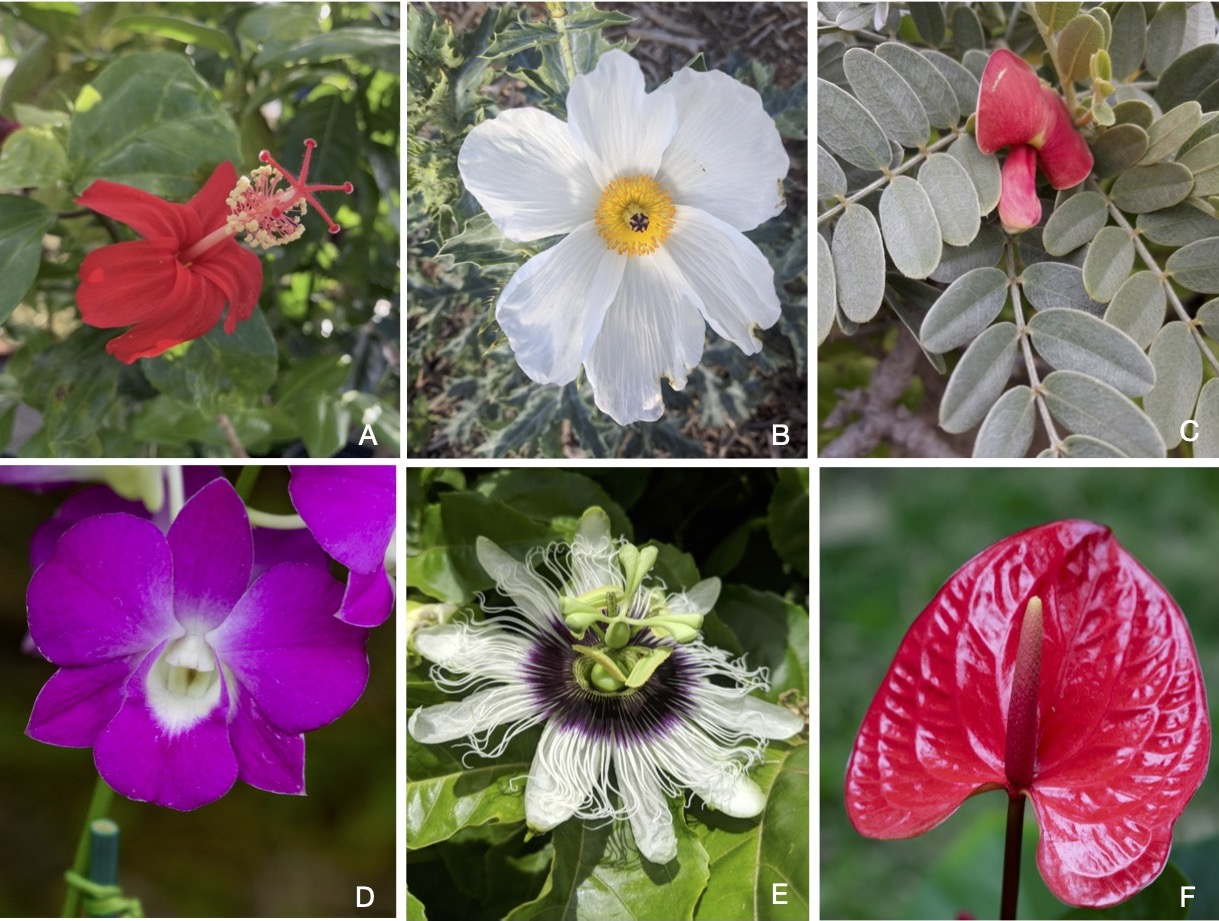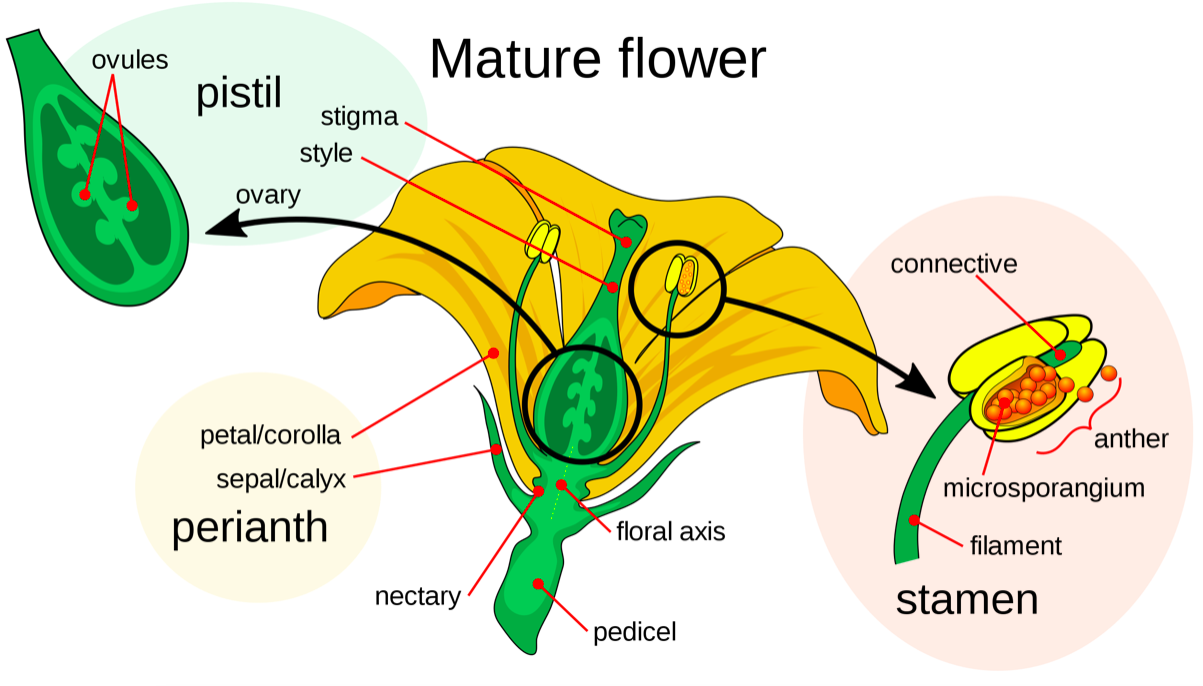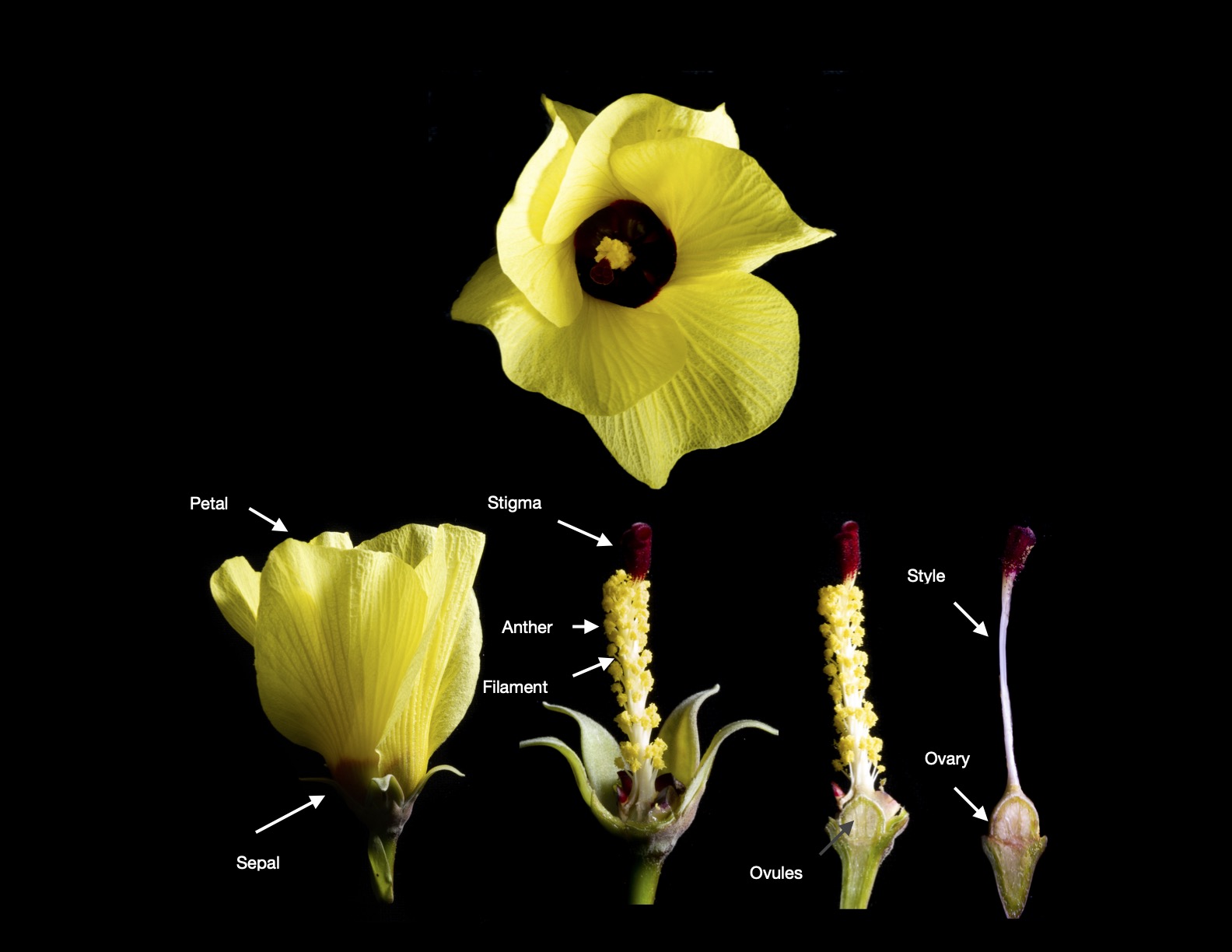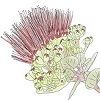5.1: Flowers
- Page ID
- 59233
\( \newcommand{\vecs}[1]{\overset { \scriptstyle \rightharpoonup} {\mathbf{#1}} } \)
\( \newcommand{\vecd}[1]{\overset{-\!-\!\rightharpoonup}{\vphantom{a}\smash {#1}}} \)
\( \newcommand{\id}{\mathrm{id}}\) \( \newcommand{\Span}{\mathrm{span}}\)
( \newcommand{\kernel}{\mathrm{null}\,}\) \( \newcommand{\range}{\mathrm{range}\,}\)
\( \newcommand{\RealPart}{\mathrm{Re}}\) \( \newcommand{\ImaginaryPart}{\mathrm{Im}}\)
\( \newcommand{\Argument}{\mathrm{Arg}}\) \( \newcommand{\norm}[1]{\| #1 \|}\)
\( \newcommand{\inner}[2]{\langle #1, #2 \rangle}\)
\( \newcommand{\Span}{\mathrm{span}}\)
\( \newcommand{\id}{\mathrm{id}}\)
\( \newcommand{\Span}{\mathrm{span}}\)
\( \newcommand{\kernel}{\mathrm{null}\,}\)
\( \newcommand{\range}{\mathrm{range}\,}\)
\( \newcommand{\RealPart}{\mathrm{Re}}\)
\( \newcommand{\ImaginaryPart}{\mathrm{Im}}\)
\( \newcommand{\Argument}{\mathrm{Arg}}\)
\( \newcommand{\norm}[1]{\| #1 \|}\)
\( \newcommand{\inner}[2]{\langle #1, #2 \rangle}\)
\( \newcommand{\Span}{\mathrm{span}}\) \( \newcommand{\AA}{\unicode[.8,0]{x212B}}\)
\( \newcommand{\vectorA}[1]{\vec{#1}} % arrow\)
\( \newcommand{\vectorAt}[1]{\vec{\text{#1}}} % arrow\)
\( \newcommand{\vectorB}[1]{\overset { \scriptstyle \rightharpoonup} {\mathbf{#1}} } \)
\( \newcommand{\vectorC}[1]{\textbf{#1}} \)
\( \newcommand{\vectorD}[1]{\overrightarrow{#1}} \)
\( \newcommand{\vectorDt}[1]{\overrightarrow{\text{#1}}} \)
\( \newcommand{\vectE}[1]{\overset{-\!-\!\rightharpoonup}{\vphantom{a}\smash{\mathbf {#1}}}} \)
\( \newcommand{\vecs}[1]{\overset { \scriptstyle \rightharpoonup} {\mathbf{#1}} } \)
\( \newcommand{\vecd}[1]{\overset{-\!-\!\rightharpoonup}{\vphantom{a}\smash {#1}}} \)
\(\newcommand{\avec}{\mathbf a}\) \(\newcommand{\bvec}{\mathbf b}\) \(\newcommand{\cvec}{\mathbf c}\) \(\newcommand{\dvec}{\mathbf d}\) \(\newcommand{\dtil}{\widetilde{\mathbf d}}\) \(\newcommand{\evec}{\mathbf e}\) \(\newcommand{\fvec}{\mathbf f}\) \(\newcommand{\nvec}{\mathbf n}\) \(\newcommand{\pvec}{\mathbf p}\) \(\newcommand{\qvec}{\mathbf q}\) \(\newcommand{\svec}{\mathbf s}\) \(\newcommand{\tvec}{\mathbf t}\) \(\newcommand{\uvec}{\mathbf u}\) \(\newcommand{\vvec}{\mathbf v}\) \(\newcommand{\wvec}{\mathbf w}\) \(\newcommand{\xvec}{\mathbf x}\) \(\newcommand{\yvec}{\mathbf y}\) \(\newcommand{\zvec}{\mathbf z}\) \(\newcommand{\rvec}{\mathbf r}\) \(\newcommand{\mvec}{\mathbf m}\) \(\newcommand{\zerovec}{\mathbf 0}\) \(\newcommand{\onevec}{\mathbf 1}\) \(\newcommand{\real}{\mathbb R}\) \(\newcommand{\twovec}[2]{\left[\begin{array}{r}#1 \\ #2 \end{array}\right]}\) \(\newcommand{\ctwovec}[2]{\left[\begin{array}{c}#1 \\ #2 \end{array}\right]}\) \(\newcommand{\threevec}[3]{\left[\begin{array}{r}#1 \\ #2 \\ #3 \end{array}\right]}\) \(\newcommand{\cthreevec}[3]{\left[\begin{array}{c}#1 \\ #2 \\ #3 \end{array}\right]}\) \(\newcommand{\fourvec}[4]{\left[\begin{array}{r}#1 \\ #2 \\ #3 \\ #4 \end{array}\right]}\) \(\newcommand{\cfourvec}[4]{\left[\begin{array}{c}#1 \\ #2 \\ #3 \\ #4 \end{array}\right]}\) \(\newcommand{\fivevec}[5]{\left[\begin{array}{r}#1 \\ #2 \\ #3 \\ #4 \\ #5 \\ \end{array}\right]}\) \(\newcommand{\cfivevec}[5]{\left[\begin{array}{c}#1 \\ #2 \\ #3 \\ #4 \\ #5 \\ \end{array}\right]}\) \(\newcommand{\mattwo}[4]{\left[\begin{array}{rr}#1 \amp #2 \\ #3 \amp #4 \\ \end{array}\right]}\) \(\newcommand{\laspan}[1]{\text{Span}\{#1\}}\) \(\newcommand{\bcal}{\cal B}\) \(\newcommand{\ccal}{\cal C}\) \(\newcommand{\scal}{\cal S}\) \(\newcommand{\wcal}{\cal W}\) \(\newcommand{\ecal}{\cal E}\) \(\newcommand{\coords}[2]{\left\{#1\right\}_{#2}}\) \(\newcommand{\gray}[1]{\color{gray}{#1}}\) \(\newcommand{\lgray}[1]{\color{lightgray}{#1}}\) \(\newcommand{\rank}{\operatorname{rank}}\) \(\newcommand{\row}{\text{Row}}\) \(\newcommand{\col}{\text{Col}}\) \(\renewcommand{\row}{\text{Row}}\) \(\newcommand{\nul}{\text{Nul}}\) \(\newcommand{\var}{\text{Var}}\) \(\newcommand{\corr}{\text{corr}}\) \(\newcommand{\len}[1]{\left|#1\right|}\) \(\newcommand{\bbar}{\overline{\bvec}}\) \(\newcommand{\bhat}{\widehat{\bvec}}\) \(\newcommand{\bperp}{\bvec^\perp}\) \(\newcommand{\xhat}{\widehat{\xvec}}\) \(\newcommand{\vhat}{\widehat{\vvec}}\) \(\newcommand{\uhat}{\widehat{\uvec}}\) \(\newcommand{\what}{\widehat{\wvec}}\) \(\newcommand{\Sighat}{\widehat{\Sigma}}\) \(\newcommand{\lt}{<}\) \(\newcommand{\gt}{>}\) \(\newcommand{\amp}{&}\) \(\definecolor{fillinmathshade}{gray}{0.9}\)Angiosperms (flowering plants) are the only group of plants to produce flowers. Flowers are rather diverse, coming in different colors, sizes, and shapes (Figure \(\PageIndex{1}\)). Some have fragrances to attract pollinators and many offer pollen and nectar to reward the pollinator’s visit. Flowers are in great part responsible for the incredible success of this group, as they can enlist help from animals like bees, butterflies, and birds to transfer pollen from one flower to another, while other groups of plants, like conifers, have to rely only on the wind for this same purpose. Flowers co-evolved with pollinators assuring that flowering plants could reproduce successfully and ensuring genetic diversity in the population. Nectar and pollen are not the only rewards offered by plants, flowering plants also offer fruits as a reward to dispersers who, in turn, take the seeds away from the mother plant and are; therefore, able to colonize new areas.
For thousands of years, humans have been fascinated by flowering plants’ reproductive structures; flowers and fruits. Many fruits are sweet and can be eaten, while flowers have been used in cultural, medicinal, and religious practices. For example, in pre-European contact Mesoamerica, in what is now called Mexico, flowers were used in many aspects of day-to-day life. Today these traditions remain strong, with flowers being used to decorate altars and graves, as well as for medicinal purposes. In Hawai‘i cultural practices can be observed with the use of flowers, fruits, and seeds for hula, lei making, and celebrations such as weddings and graduations.

Flower Parts
To understand how flowers are involved in the sexual reproduction of plants, we first need to identify the flower parts. Flowers contain the female and male reproductive structures of flowering plants. The female reproductive structures are organized into the pistil, which consists of the stigma, style, and ovary. The stigma is the very top part of the pistil. It is usually flattened and sticky, as pollen grains that come from other flowers need to be collected here for sexual reproduction to happen. The style is a tube that connects the stigma to the ovary. And finally, the ovary is the rounded portion at the base of the flowers, and it contains the eggs (ovules). The male parts of the flower, on the other hand, are called stamen and they are composed of the anther and the filament. The anther is a double canoe-like structure where pollen grains are produced, and the filament is the stalk that supports the anther (Figure \(\PageIndex{2}\)).
Besides containing the plant's sexual organs, flowers also have other parts, which are collectively called the perianth. The perianth is composed of petals and sepals. The petals are the colorful flower parts that attract pollinators. At the base of the flower are the sepals, which are green leaf-like structures that protect the flower in bud.

Flowers from different species are unique, with variations in the way these basic parts described above are distributed. When you think about a typical flower, as the one shown above (Figure \(\PageIndex{2}\)), the stamen and pistil are normally found independently. However, this is not always the case. Flowers in the Hibiscus genus, for example, have the style from the pistil and the filaments from the anthers fused forming a single long tube, in which the anthers branch out close to the stigma (Figure \(\PageIndex{3}\)).

Flowers can be perfect, having both male and female parts, or imperfect, having just one sex (male or female). Kokiʻo keʻokeʻo is an example of a perfect flower, with both stamen and pistil (Figure 3). Imperfect flowers also come in different arrangements. Male and female flowers (imperfect) may be found growing in the same plant, as it happens in the breadfruit tree (Artocarpus altilis, Hawaiian ‘ulu or Samoan and Tongan ma‘afala), pictured below (Figure \(\PageIndex{4}\)).

Imperfect flowers can also be found in separate trees. For example, hala (Pandanus) has female flowers growing on one plant while male flowers grow on another, so the plant is either male (Figure \(\PageIndex{5}\)) or female (Figure \(\PageIndex{6}\)). A plant is called dioecious when it has male and female flowers on separate plants. This only happens in a minority of plants, as most plants are monoecious, having both male and female flowers on the same plant. How can you remember this? Breaking down the words into their roots is a good way. For example “di” means two, so you have two houses while “mono” means one (one house). Or just think about animals, we are dioecious because you can have either a male or a female.


Flowers of Monocots and Eudicots
Monocots and eudicots are the two largest groups of flowering plants, and they can be easily recognized based on their flower parts. Flower parts (e.g. petals, sepals, stamens) in monocots are arranged in 3 or multiples of 3, while eudicot flowers are arranged in 4 or 5 or multiples of 4 or 5. Therefore a monocot flower may have 6 stamens and 6 petals (Figure \(\PageIndex{7}\)). Eudicot flowers, on the other hand, may have 5 petals (Figure \(\PageIndex{8}\)). This comes in handy when you are trying to identify plants in the field. Finding out if a plant is a monocot or an eudicot is the first step in plant identification because you can rule out several plant families. If the plant is a monocot, then you will only look at monocot families from that point onward.




